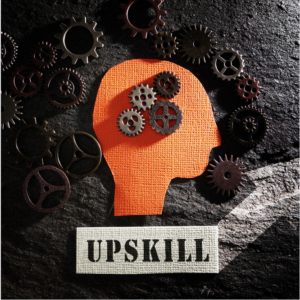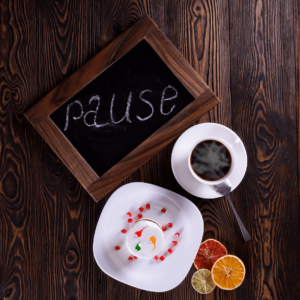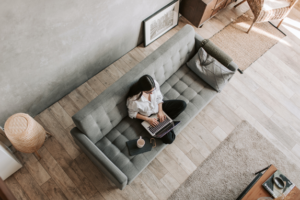Sitting at work is a health risk
Sitting down on the job can be a real health risk
Simple exercises at the desk not only help productivity, but can stave off long-term health problems, as Vanessa Croll reports
WORKING in front of a computer all day can do terrible things to your body. When muscles aren’t used, blood circulation decreases and the body becomes lethargic, tense and over time can develop serious health problems.
“Our bodies are very clever as they continually adapt to whatever stimulus we give it,” says Paddington personal trainer Jessica Darr, pictured.
“If we are hunched over a desk with our shoulders rounded for most of the day then the muscles in our chest, lower back and hips will tighten to keep that posture.
“To counteract the amount of time sitting in a hunch, we need to do the opposite action to avoid potential postural problems.”
Physiotherapist Rebecca Keen, from Results Physiotherapy at Chandler, regularly treats clients who suffer pain as a result of their sedentary jobs.
“A large percentage of my clients have complaints relating to their desk-jobs, especially with their lower and upper backs,” Keen says.
“Some complain of general aching from prolonged sitting, others experience sharp pain when they go from sitting to standing and headaches are very common because they don’t look away from their computers and give their eyes and muscles a rest.”
Keen recommends following a “30, 30, 30 rule” to prevent the joints stiffening.
“Every 30 minutes, take a 30 second break to do some simple exercises and look 30 metres away,” she advises.
If you are part of the sedentary working population, try adding these simple and somewhat discrete “desk-ercises” to your daily grind.
You won’t shed kilos or be fit enough to run a marathon but they will help your brain and body function better.
Breathe
FIRST you need to remind yourself to breathe. Sounds simple but when people are stressed or pressured by deadlines they forget to breathe properly and restrict airflow around the body.
1. Sit tall in your chair, straightening your spine and relax your shoulders. Close your eyes and concentrate on relaxing facial muscles.
2. Maintaining good posture, slowly take a deep breath through your nose, filling your lungs from the lower, middle then upper portions (should take 10 or more seconds).
3. Hold the breath for a few seconds then at the same pace release the air from your abdomen then your chest.
Pelvic floor squeeze
THE pelvic floor muscles sit deep within your body and stretch from the tailbone to the pubic bone and are responsible for supporting the bowel, bladder, and reproductive organs.
So, as you can imagine, if you don’t keep these muscles strong, you will have some problems down the track.
“Activating the muscles of the pelvic floor is much more than just pulling your belly button towards your spine like commonly quoted,” Darr says.
“To properly activate your pelvic floor, follow these steps;
1. Sitting up straight with your feet planted on the ground (knees at 90 degrees) and looking straight ahead take a deep breath in to your belly.
2. When you breathe out, think about breathing out through your belly button while drawing your tummy and pelvic floor “up and in”. You should feel the squeeze in the lower part of your abdomen.
3. Start with five second holds of 20 repetitions each day, increasing the length of the hold as you improve.
The action of activating your pelvic floor and deeper abdominal muscles occurs every time we cough or sneeze. If you can think of that feeling and hold on to it, then your should be utilising the right muscles.
Legs and lower back
1. Straighten one leg out in front of you, raising it above the chair so your muscles work to hold it there.
2. Slowly flex your toes forward then pull them back towards your knee so your calf muscle is stretching and flexing. Do this for one minute.
3. Without resting your foot start pulsing your straight leg up and down while squeezing your pelvic floor muscles. Try and maintain the pulse for one minute then repeat everything on the other leg.
Keen says it is also very important to move the lower back muscles.
“They can do this by lifting and pulling each knee to their chest. Also rotating to the left then the right and then leaning their upper body to both sides will help,” she says.
Bum
1. To activate your derriere focus on tightening and squeezing your cheeks together.
2. Hold for five to 10 seconds then release and repeat 15 times.
Office mates may get a little suspicious with you bobbing up and down but by strengthening your gluteus muscles not only will it firm your tush, but it will also take some strain off your lower back.
Inner thighs
1. Sitting tall with feet flat on the ground, place a cushion or rolled up jumper between your knees.
2. While tightening your pelvic floor and bottom muscles squeeze your knees together, squashing the cushion as tight as you can so you can feel your inner thighs contracting.
3. Hold for five to 10 seconds then relax and repeat 10-15 times. This is a great exercise for runners who have knee problems from over pronating (rolling their feet inwards) because it strengthens the weakened muscles.
Hands, forearms and wrists
KEYBOARD typing and mouse clicking for hours at a time creates stress through your hands and forearms.
Find yourself a soft ball or a stress ball and keep it beside your computer to give your hands regular breaks.
Throughout the day squeeze the ball as many times as you can until your forearm begins to burn. Repeat the same number on the other hand. You should try to progressively get a higher number.
Get a thick rubber band with sturdy resistance and place around your fingers and thumb.
Bring fingertips together then slowly stretch your hand out, hold for a few seconds then slowly bring finger tips back together. Repeat 10-15 times on both hands.
Back
1. Reach forward and grip the front of your seat. Straighten your spine and arms so you can feel resistance.
2. Keeping your arms straight, squeeze your shoulder blades together and hold for 10-20 seconds. Repeat 10-15 times.
Note: Make sure to not tense your neck muscles and really focus on getting your shoulder blades together.
“Some people generally need to do some shoulder rolls to relieve tight neck muscles,” Keen says. To do this, she recommends sitting tall and rolling shoulders slowly backwards 10-15 times. Keen says this fights the constant forward push of gravity and stimulates your postural muscles. She also advises general neck stretches such as tilting the ear to the shoulder and holding for 20-30 seconds.
Chest and triceps
Desk push-ups
OF ALL the exercises this one will probably draw the most attention but is great for your arms and chest. Before starting make sure your desk is stable and steady enough to hold your weight.
1. Place your hands on the desk a bit wider than your shoulders and push yourself up on to your toes.
2. Push your bottom in so your back and legs are in one line and your abdominals are working to keep you in place.
3. When doing the push-up bring your chest to touch the bench, squeeze your abdominals then push yourself all the way up. Try to do 15 slow and controlled. To make it harder do a little pulse at the bottom of each push-up.
While it is important to strengthen the chest muscles Darr says it is also important to keep them flexible.
“Chest tightness is common within the workplace from hunching over computers and desks, she says.
“I often work with clients who have poor posture and rounded shoulders from this. To counteract this problem I suggest the following:
Door Chest Stretch
1. Standing in a doorway, bend elbows at 90 degrees and press them into the door frame. You should feel a stretch across your chest. 2 x 30 second holds.
Note: If you have an existing health problem, an injury or niggling complaint seek professional advice before starting any exercise program.



